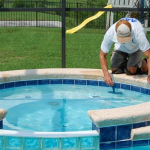As more Tampa homeowners and businesses consider transitioning from natural lawns to artificial grass, understanding the financial implications of this investment is crucial. Synthetic grass, with its promise of minimal maintenance and year-round greenery, offers an appealing alternative to traditional sod. However, the initial cost and the promise of long-term savings warrant a comprehensive analysis. This article aims to dissect the costs involved in installing artificial turf in Tampa, comparing upfront expenditures with potential long-term benefits.
Upfront Costs
- Material Quality and Type:
The price of artificial grass largely depends on its quality, pile height, and intended use (residential, commercial, or sporting). Prices can range from $2 to $8 per square foot for standard residential turf. Higher-end options, designed to closely mimic the feel and appearance of natural grass, can cost up to $12 per square foot.
- Ground Preparation:
Before installation, the existing lawn must be removed and the ground leveled and prepared. This process can involve removing the top layer of soil, adding a base layer of crushed rock for drainage, and compacting the surface. The cost for ground preparation can vary widely, usually between $4 and $11 per square foot, depending on the condition of the existing landscape and the required depth of base materials.
- Installation Fees:
Labor costs for installing artificial grass can range from $1.50 to $4 per square foot. The complexity of the landscape, obstacles (like trees or walkways), and the size of the installation area can affect the overall labor cost.
Considering these factors, the total upfront cost for installing artificial grass in Tampa can range from $7.50 to $27 per square foot. For a typical 500-square-foot lawn, this translates to an investment of approximately $3,750 to $13,500.
Long-Term Savings
- Water Savings:
In Tampa, where water use restrictions are expected during dry seasons, artificial grass can significantly reduce water bills. The average household lawn requires about 1 inch of water per week, translating to approximately 0.623 gallons per square foot. Over a year, switching to artificial turf can save thousands of gallons of water, contributing to lower utility bills and conserving valuable resources.
- Maintenance Costs:
Artificial turf eliminates the need for regular lawn maintenance tasks such as mowing, fertilizing, and re-sodding. While a natural grass lawn can cost between $100 and $200 per month to maintain, artificial grass only requires occasional rinsing to remove dust and debris and brushing to keep the blades upright. This difference can amount to significant savings over time.
- Durability and Lifespan:
High-quality artificial grass can last between 15 and 25 years, depending on foot traffic and maintenance. In contrast, natural grass lawns, especially in Florida’s challenging climate, can require costly repairs and re-sodding to maintain their appearance. The extended lifespan of artificial turf magnifies its cost-effectiveness over time.
Environmental Considerations
While discussing costs, it’s also worth noting the environmental benefits and drawbacks of artificial turf. On one hand, it reduces water use and pesticide and fertilizer runoff, contributing to environmental conservation. On the other hand, concerns about heat retention, the impact of synthetic materials on wildlife, and the disposal of artificial turf at the end of its life cycle warrant consideration.
Investing in artificial grass in Tampa involves a substantial upfront cost, influenced by factors such as material quality, ground preparation, and installation fees. However, the long-term savings on water bills, maintenance costs, and the durability of artificial grass make it a financially viable option for many. Homeowners and businesses must weigh these costs and benefits in the context of their budgets, environmental values, and lifestyle preferences. As artificial turf technology continues to advance, its efficiency, aesthetics, and cost-effectiveness are likely to improve, making it an increasingly attractive option for Tampa residents seeking a low-maintenance, sustainable lawn solution.





